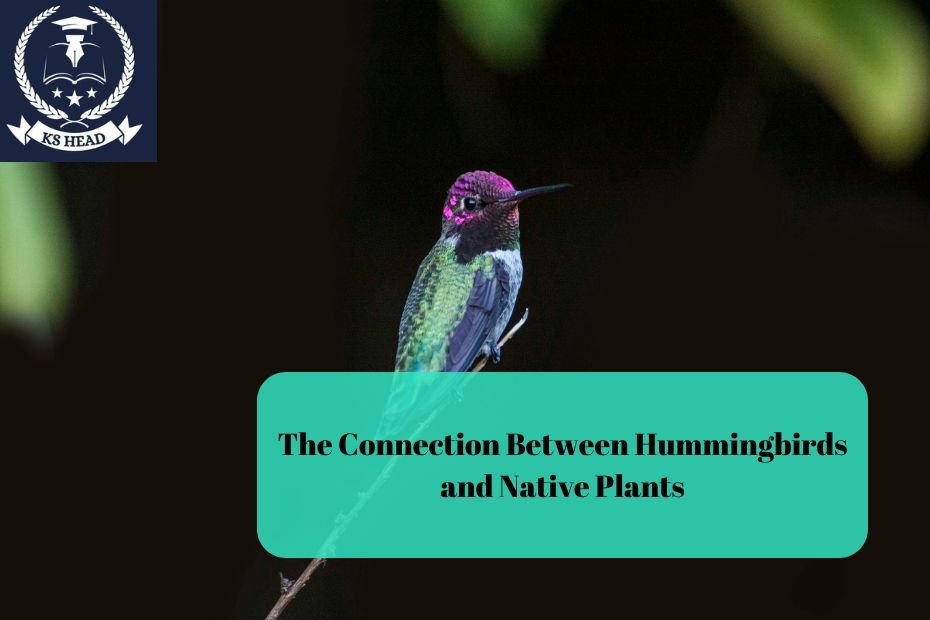Hummingbirds are among the most fascinating birds, known for their vibrant colors, incredible flying abilities, and critical roles in ecosystems. Their relationship with native plants is particularly vital, as these plants provide essential resources for hummingbirds, such as nectar, shelter, and nesting materials. This article explores the connection between hummingbirds and native plants, highlighting the importance of preserving native flora to support these magnificent birds and the broader ecosystem.
Understanding Hummingbirds
Hummingbirds belong to the family Trochilidae and are primarily found in the Americas. With over 300 species, they are best known for their ability to hover in mid-air and fly backward, thanks to their unique wing structure and rapid wing beats. Hummingbirds have specialized adaptations that enable them to access nectar from various flowers, making them important pollinators in many ecosystems.
Hummingbird Feeding Habits
Hummingbirds primarily feed on nectar, which provides them with the high energy needed for their rapid metabolism and agile flight. They have long, specialized tongues that can extend far beyond their beaks to extract nectar from deep within flowers. In addition to nectar, they also consume insects and spiders for protein, which is crucial for their growth and reproduction.
Importance of Nectar Sources
Nectar serves as the primary food source for hummingbirds. The sugar concentration in nectar can vary among plants, affecting its attractiveness to these birds. Hummingbirds are particularly drawn to:
- Brightly colored flowers: Hummingbirds are attracted to vibrant colors, especially red, orange, and pink. These colors signal the presence of nectar-rich blooms.
- Tubular flower shapes: Flowers that are tubular in shape are more accessible for hummingbirds, allowing them to reach the nectar while simultaneously facilitating pollination.
- Continuous bloom cycles: Plants that flower at different times throughout the season provide a reliable food source for hummingbirds as they migrate and raise their young.
The Role of Native Plants
Native plants are species that naturally occur in a specific region without human introduction. They have co-evolved with local wildlife, including hummingbirds, creating symbiotic relationships that benefit both plants and animals. Here are some key reasons why native plants are crucial for hummingbirds:
1. Adaptation to Local Conditions
Native plants are well-adapted to local soil, climate, and ecological conditions, making them more resilient to pests, diseases, and extreme weather. This resilience ensures a stable food supply for hummingbirds, particularly during challenging environmental conditions.
2. Higher Nutritional Value
Research shows that nectar from native plants often contains higher sugar concentrations than that from non-native species. This higher nutritional value is critical for the high-energy needs of hummingbirds, especially during migration and breeding seasons.
3. Attraction and Diversity
Native plants support a diverse range of pollinators, including various hummingbird species. By planting native species, gardeners can create environments that attract hummingbirds and promote biodiversity in their local ecosystems.
4. Minimal Maintenance
Native plants generally require less maintenance than non-native species, as they are adapted to local conditions. They typically need less water and fertilizer, making them a sustainable choice for gardens and landscapes.
Creating Hummingbird-Friendly Gardens
To attract and support hummingbirds, gardeners can create hummingbird-friendly habitats by incorporating native plants. Here are some tips for designing a hummingbird-friendly garden:
1. Choose Native Flowering Plants
Select native flowering plants that provide ample nectar for hummingbirds. Some popular choices include:
- Bee Balm (Monarda spp.): Known for its vibrant red, pink, and purple flowers, bee balm attracts hummingbirds and other pollinators.
- Cardinal Flower (Lobelia cardinalis): This native plant produces striking red flowers that are highly attractive to hummingbirds.
- Trumpet Vine (Campsis radicans): With its tubular orange-red flowers, trumpet vine is a favorite among hummingbirds.
- Columbine (Aquilegia spp.): Native columbines produce delicate, bell-shaped flowers that are perfect for hummingbird feeding.
2. Provide a Variety of Blooms
To ensure a continuous food supply, select plants that bloom at different times throughout the growing season. This diversity will help attract hummingbirds during their migration and breeding seasons.
3. Minimize Pesticide Use
Reducing or eliminating pesticide use in your garden can benefit hummingbirds and other wildlife. Pesticides can harm these birds directly or reduce the availability of insects, which are an essential protein source.
4. Offer Water Sources
Hummingbirds need water for drinking and bathing. Adding a small fountain, birdbath, or shallow dish filled with fresh water can create an inviting environment for these birds.
5. Create Shelter and Nesting Sites
Planting native shrubs and trees provides shelter and potential nesting sites for hummingbirds. Dense foliage offers protection from predators and harsh weather conditions.
The Impact of Urbanization on Hummingbirds
Urbanization and habitat loss pose significant threats to hummingbird populations. As natural habitats are converted into urban landscapes, the availability of native plants diminishes, leading to food shortages for these birds. To counteract these effects, communities can take several actions:
1. Promote Native Landscaping
Encouraging the use of native plants in residential and commercial landscaping can help restore local habitats and provide food sources for hummingbirds and other wildlife.
2. Educate the Public
Raising awareness about the importance of native plants and their connection to hummingbirds can foster community support for conservation efforts. Workshops, seminars, and community gardening projects can engage residents and promote sustainable practices.
3. Support Conservation Initiatives
Participating in or supporting local conservation initiatives aimed at preserving native habitats can help protect hummingbird populations and their food sources.
Conclusion
The connection between hummingbirds and native plants is vital for the survival of these enchanting birds and the ecosystems they inhabit. By understanding this relationship and taking steps to cultivate native flora, we can create environments that support hummingbirds and enhance biodiversity. Protecting and restoring native habitats is not just essential for hummingbirds but for the overall health of our ecosystems. As we work together to foster these connections, we contribute to a richer and more sustainable world for all living creatures.
FAQs
1. Why are native plants important for hummingbirds?
Native plants provide essential nectar, higher nutritional value, and habitat for hummingbirds, supporting their survival and reproduction.
2. What types of flowers attract hummingbirds?
Hummingbirds are attracted to brightly colored, tubular flowers, particularly those that are red, orange, or pink. Examples include bee balm, cardinal flower, and trumpet vine.
3. How can I create a hummingbird-friendly garden?
To create a hummingbird-friendly garden, plant a variety of native flowering plants, provide water sources, minimize pesticide use, and offer shelter and nesting sites.
4. Do hummingbirds migrate?
Yes, many hummingbird species migrate seasonally, traveling long distances to find food and suitable breeding grounds. Their migration patterns can vary based on species and geographic location.
5. How can urban areas support hummingbirds?
Urban areas can support hummingbirds by promoting native landscaping, reducing pesticide use, and creating awareness about the importance of conserving native plants and habitats.

